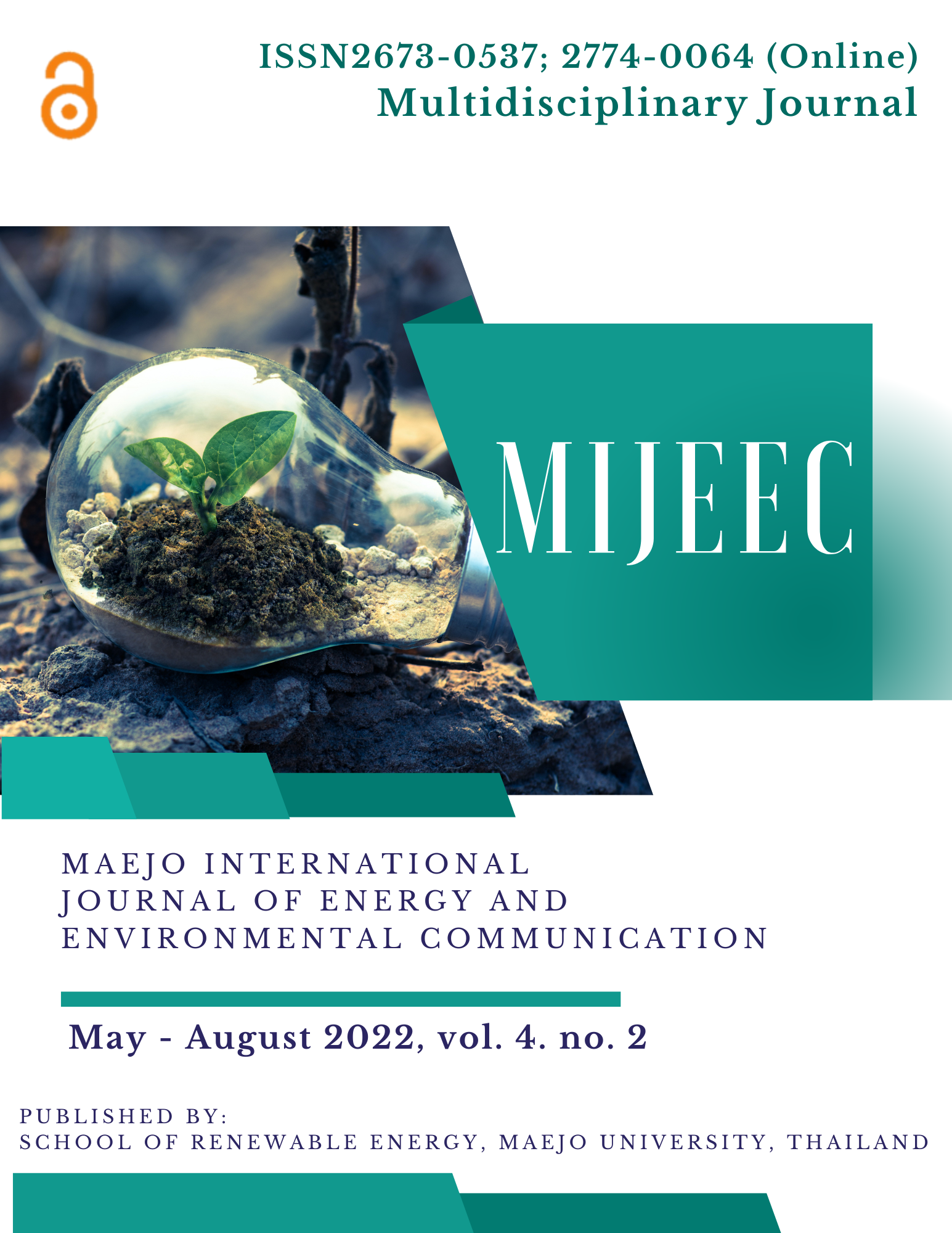Beneficiation of organic black onion and lemon peel by-products through extraction and investigation of bioactive compounds
Main Article Content
Abstract
Much research on the shallot phytochemical is currently employed in various disciplines, such as medical reasons. Shallot (Allium ascalonicum) is a plant species belonging to the family Amaryllidaceae. It is a native plant grown in the North and Northeast region of Thailand. The present study aimed to determine the extracts' yield and antioxidant properties of black shallots made from fresh shallots. The black shallots were extracted with digestion by water, 47.5% and 95% ethanol at 50 ℃ for 1, 3 and 5 hours. The result discovered that black shallot extraction with digestion by water for 5 hours showed the highest weight of extracts (3.620 g). The determination of antioxidant activity by DPPH was observed, and extraction by water for 5 hours gave the highest percentage of inhibition. It was equal to 84.61%, which is not different from the digestion of 95% ethanol for 1 hour, with 83.48%. Similarly, the most outstanding value of IC50 was obtained from extraction with 95% ethanol for 1 and 5 hours with 21.30 mg/ml and 20.52 mg/ml. In terms of monitoring, the digestion method evaluated the productivity of pectin extracts from citrus peel. Hydrochloric acid (0.100, 0.050 and 0.025 M) was used as a solvent at 95 ℃ for 30, 60 and 90 minutes. The pectin extract by 0.1 M hydrochloric acid for 90 minutes gave the highest extract (5.237 g). The preliminary testing of cosmetic production was done by mixing black shallot extracts and pectin from citrus peels, and the two substances can be combined. Still, without adding preservatives, they could cause contamination in cosmetic samples.
Article Details

This work is licensed under a Creative Commons Attribution 4.0 International License.
Copyright © 2019 MIJEEC - Maejo International Journal of Energy and Environmental Communication, All rights reserved. This is an open-access article distributed under the terms of the Creative Commons Attribution-NonCommercial- Attribution 4.0 International (CC BY 4.0) License






